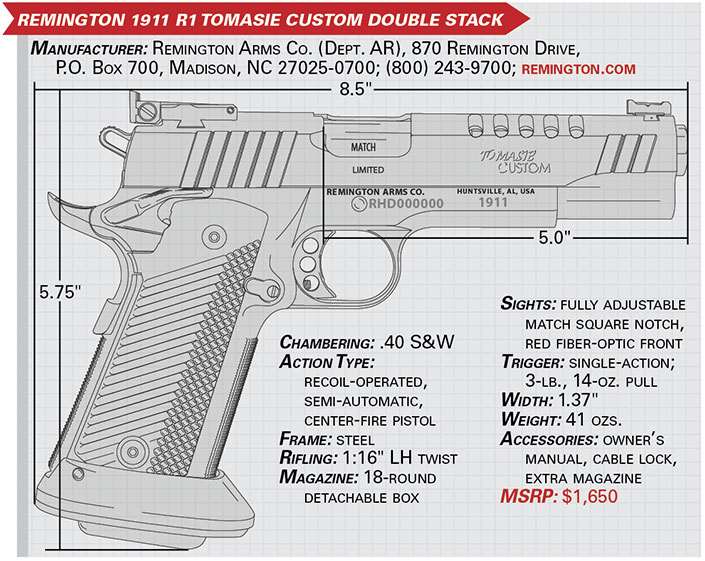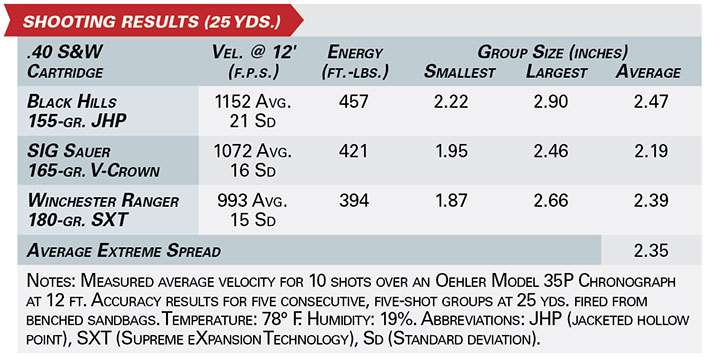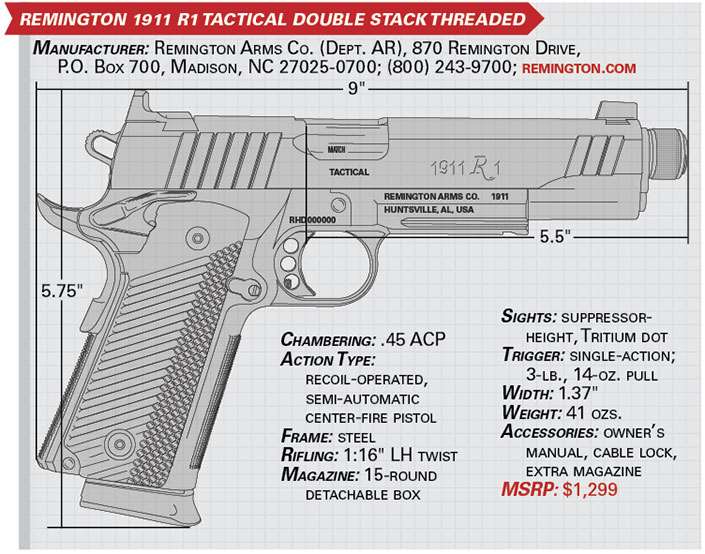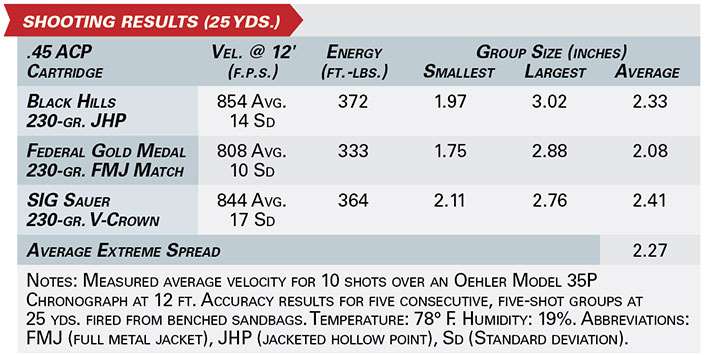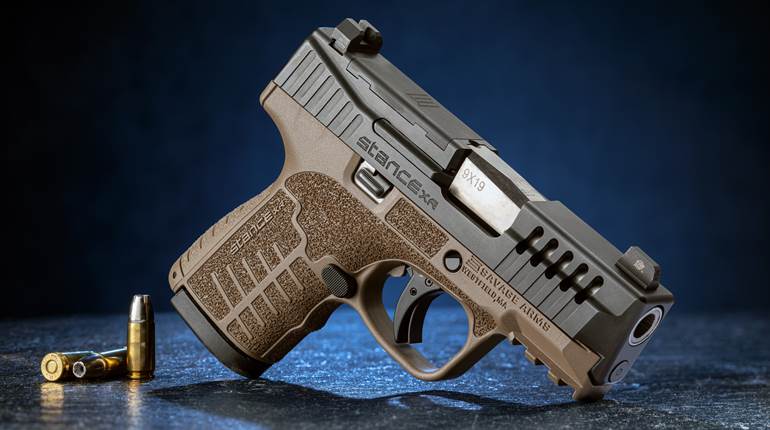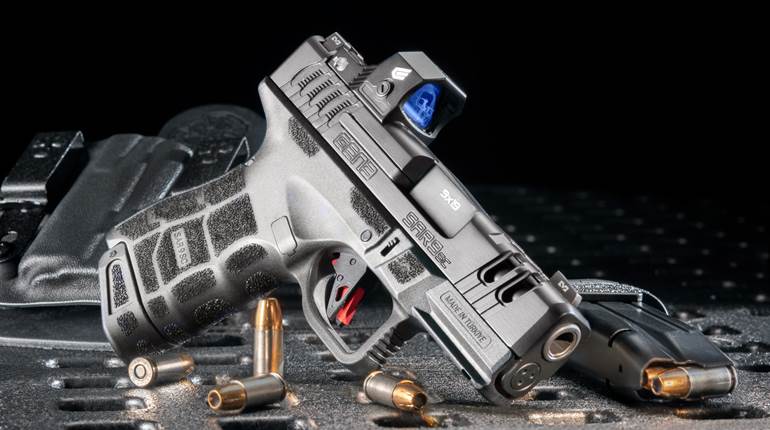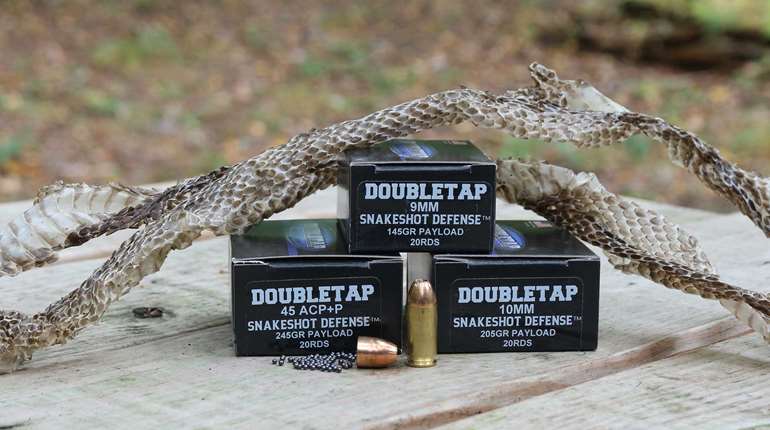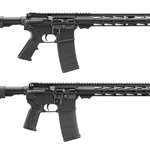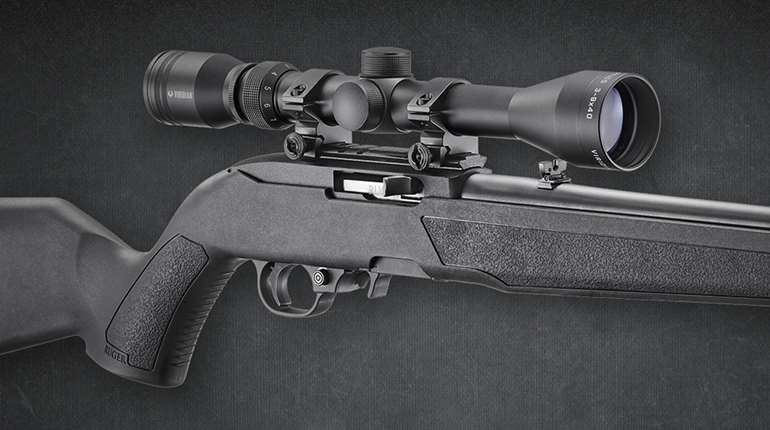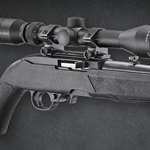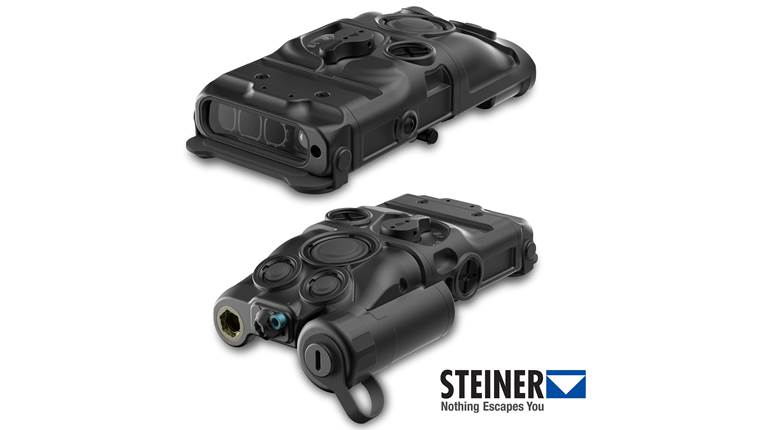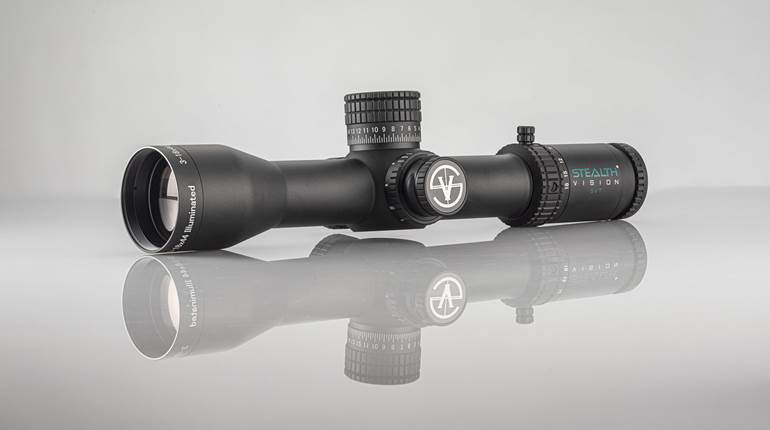
Among the five variants of the R1 1911 Double Stacks are the Tactical Double Stack Threaded in .45 ACP (left) and the Tomasie Custom Double Stack in .40 S&W (right).
Several years ago, I enjoyed the privilege of writing up a new entry in the great M1911 race. It was Remington’s version of the classic M1911 American service pistol, the R1. Remington, the senior arms maker in the republic, dating to 1816, had just begun offering several versions of its M1911 made in Ilion, N.Y. The shooting samples that came to me were all decent guns, and several were quite accurate.
Remington then acquired Para-Ordnance in 2012, a company well known for wide-frame M1911s and expanded-capacity, double-column magazines. Founded in the 1980s, Para-Ordnance originally offered its innovative frame and magazine as a kit that a shooter (or his pistolsmith) could pair with a standard M1911 slide to fully double the platform’s magazine capacity of .45 ACP cartridges from the then-standard seven rounds to 14. The idea was well-received, especially by competition shooters. After a brief re-introduction as Para USA (February 2014, p. 54), Remington ultimately closed Para’s Pineville, N.C., plant and dropped the brand all together—promising, instead, a forthcoming line of Para-inspired pistols under the Remington name. Since then, Big Green has had a tumultuous run, and many shooters wondered if they would ever see a Remington-branded double-stack in .45 ACP.
Luckily, Remington decision makers saw the intrinsic value in Para’s double-stack M1911 frame, and the company’s line of R1 M1911-style pistols has broadened to include 24 variations, of which five are now double-stacks. Configured to meet specific needs, the guns are made in Remington’s Huntsville, Ala., facility and are offered in a variety of size, length, sight and control options, as well as three chamberings—9 mm Luger, .40 S&W and .45 ACP. From the new line of double-stacks, we decided to focus on just two guns—one for going into harm’s way, the Tactical Double Stack Threaded in .45 ACP, and a race gun for the hardcore competitor, the Tomasie Custom Double Stack in .40 S&W.
Before we get into the specifics of the two guns, remember that the R1 line is based on the seminal M1911, meaning they are single-action, recoil-operated semi-automatics and use John Browning’s swinging link. It’s a tried-and-true system originally designed to feed from a single-column magazine. The challenge for Para, and now Remington, was developing a reliable double-stack magazine and a receiver that positions it correctly for feeding—all while keeping it in a package small enough to fit into an average-size hand.
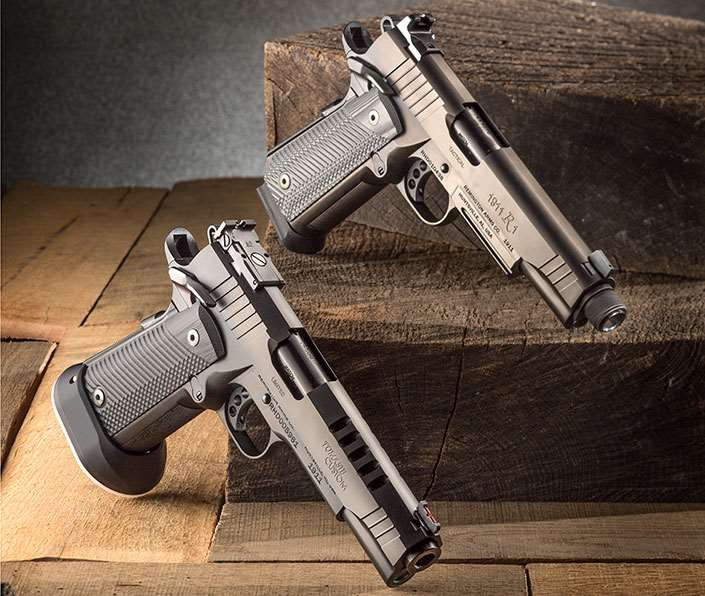
As did Para-Ordnance before, Remington has done these things, and I encountered no functional magazine problems in preparing this report. But make no mistake about it, these are big, heavy pistols that are more difficult to hide on one’s person than, say, a single-stack Commander. They are great home-defense pistols and great for the range for sure, but way too big for most shooters to tuck into the hip pocket for a midnight trip to the convenience store. Also, any of these new double-stacks might be a good option for the armed professional, particularly those who go uniformed. More on this when we get to shooting.
First, let’s look at the Tactical Double Stack Threaded. It comes out of the big, square Remington box ready for serious defensive use—or merely a trip to the range. It is not a small gun, measuring 9" long and 5¾" high and weighing 41 ozs. empty. As such, it would require a seriously sturdy belt and holster rig to be carried.
Both the slide and frame are stainless steel and finished in black with a tough ion bond physical-vapor-deposition (PVD) finish. The slide’s rear has six serrations per side, and there are three front serrations, too. On this R1, the barrel is not the traditional 5" variety. Remington is aware that making a gun of this kind suppressor-ready is essential (the parent company owns AAC, after all), and therefore chose a 5½" match-quality barrel with .578x28 TPI threads. The 1911 R1 Tactical Double Stack Threaded also comes with a thread-protector at the muzzle.
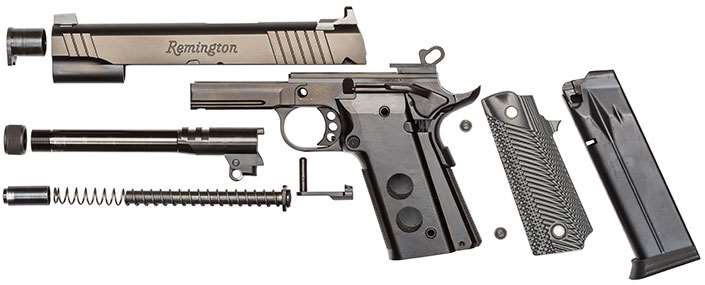
Standing much higher on the slide than G.I. guns from a century ago, the dovetailed sights have a single tritium dot on the serrated rear face at the bottom of the notch as well as one in the rear face of the post front. The extra height raises the sighting plane well above the slide; it’s just enough to clear the upper edge of most varieties of modern suppressors. The Tactical’s ledge-style rear unit can also be used to assist one-handed manipulations of the slide.
The pistol’s receiver has a rail on the dustcover for lights or laser-sighting systems. It is flat on the bottom, with a single cross slot, and does not extend all the way to the muzzle, making it less obtrusive than some. The checkered mainspring housing is flat, not the arched style of the M1911A1. On the frontstrap, there’s a crisply executed panel of checkering that works very well as an aid to keeping the pistol anchored in the hand. This also applies to the pistol’s stocks. They’re G10 with a combination of checkering and angular grooves. Made by VZ Grips, they lend a modern aspect to the pistol’s otherwise businesslike appeal.
Controls are pure M1911 style with the magazine catch, slide lock and grip safety in their typical locations. The all-important thumb safety is bilateral, extended and clicks on and off crisply. That is important for a gun that will likely be carried cocked-and-locked, ready for defensive use.
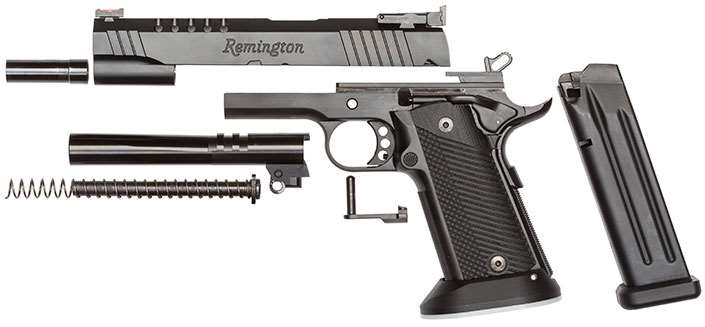
The other gun, the Tomasie Custom Double Stack, is even more specialized. Competitive handgun shooting enjoys steadily increasing popularity, and Team Remington is right there with Team Springfield, Team Ruger and others. At the helm is Travis Tomasie, a man with extensive experience in pistol shooting, particularly the action-shooting games. From his beginnings in Seattle through service with the U.S. Army Marksmanship Unit and IPSC championships, he has been at the top. As most handgunners are aware, modern handgun games involve multiple targets at various ranges and scoring that rewards speed. It’s specialized shooting for sport, and highly specialized equipment is needed. To fulfill that need, Remington had Tomasie specify a 1911 R1 Double Stack that has the features most needed by the action-shooting competitor.
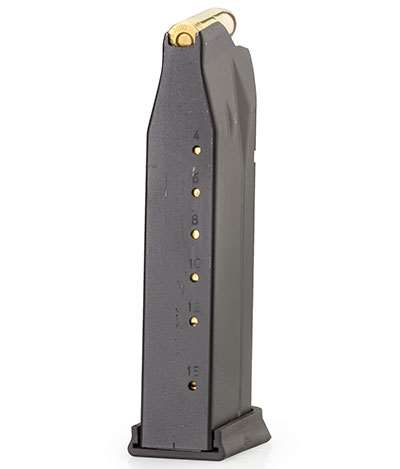
The basis for the Tomasie Custom Double Stack is the same stainless steel receiver we have already covered. It differs in the sense that it is a .40 S&W and uses a magazine with a capacity of 18 rounds. Also, the frame is designed for speedy draws, not tactical use, and therefore dispenses with the dustcover rail. There is checkering on the frontstrap and mainspring housings, as well as the controls. Tomasie’s version does have a non-traditional feature in the form of an oversize magazine well. Made of black-anodized aluminum, the well surrounds the butt with the stocks in place. It is fastened to the pistol by its interior shape and a longer-than-usual mainspring housing pin. It’s interesting to note that the interior of the magazine well is white polymer, which makes for an easy-to-find contrast against the dark magazine and a lubricious raceway for reloads. It adds bulk to the gun, but speed to magazine changes.
Action shooting emphasizes speed, but also requires a strong dose of old-fashioned accuracy to go with it. Tomasie’s Custom Double Stack uses a red fiber-optic front sight and a fully adjustable BoMar-style rear. Sight picture with this system is crystal-clear. Accuracy is not a function of the sights, but only sights like these allow the shooter to deliver the accuracy inherent in the gun—and the ammunition—to the exact spot he or she wants. They are mounted on a slide specially made for the Tomasie Custom project. The traditionally round M1911 slide is replaced by a flat-top, tri-cut assembly, which features angled faces and gives the top of the gun a faceted appearance. On both of the angled flats, between the ejection port and front sight, a series of five ovoid ports run clear through the slide to the barrel. They are not ports in the sense of venting gas upwards; they should lighten the slide a bit, increasing slide velocity, but I suspect they are mostly cosmetic.
The trigger pull on both pistols I reviewed was very good at just under 4 lbs., but the Tomasie was a little more crisp. That fine pistol showed signs of close attention in the slide-to-frame fit and, more importantly, barrel-to-slide fit.
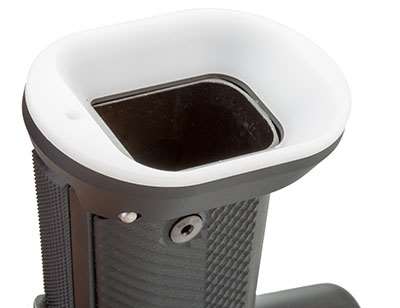
At the range, I initially set up to fire a typical American Rifleman handgun protocol, using the Ransom Rest. I had the correct inserts, but found that the addition of a bilateral safety rendered them useless, so it was a hand-held shoot. The Tactical Double Stack went first, with results tabulated nearby and showing respectable accuracy. I also spent some time with informal shooting and gun handling. At 25 yds., the Tactical grouped a foot high, which is an issue that I would like to see the manufacturer address. Usually, that demands a lower rear sight (or higher front sight).
I have already mentioned the Tactical pistol’s weight, which is 41 ozs.—empty. Sixteen rounds of 230-gr. ammunition weighs 12 ozs. and brings the on-tap, fully loaded weight to 53 ozs. That’s a lot of power, but the weight is equally impressive. As a counterpoint to the weight argument, recall that heavier guns don’t kick like lighter ones. As expected, the first shot from a fully loaded Tactical has much less bump than firing the last one.
The great sights and superb trigger made the Tomasie pistol a delight to shoot, but I had several failure-to-chamber malfunctions. I firmly believe that the extremely tight fit procedures used in building the pistol caused the slide to be slow in closing. It might be cured by several thousand cycles with an over-lubed gun and dummy rounds. But just shooting the daylights out of the gun will likely break it in.
The Para-Ordnance name might not be in common use at the gun counter these days, but its double-stack legacy lives on through the 1911 R1 Double Stack widebodies being marked with the Remington name on the factory floor in Huntsville. Remington has some fine new guns here, and they deserve the attention of shooters everywhere who value the advantage of fewer reloads thanks to the extra rounds on-board.
